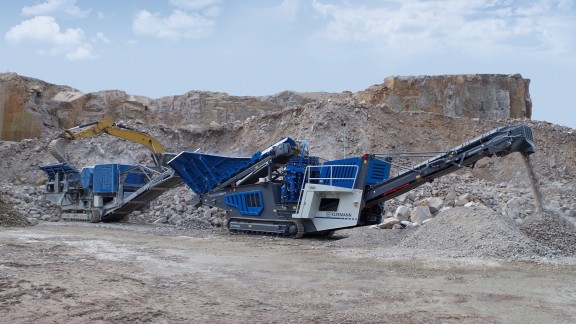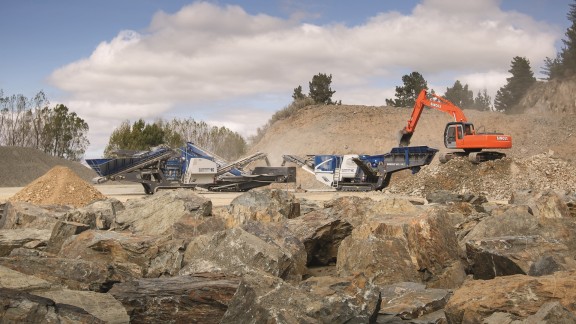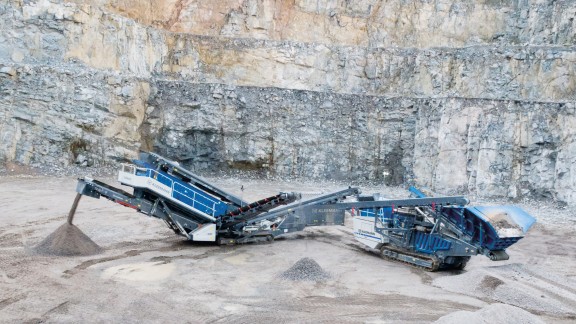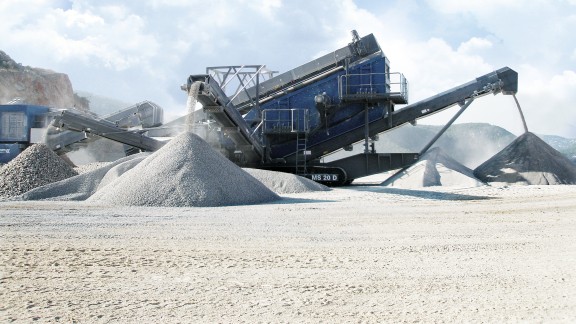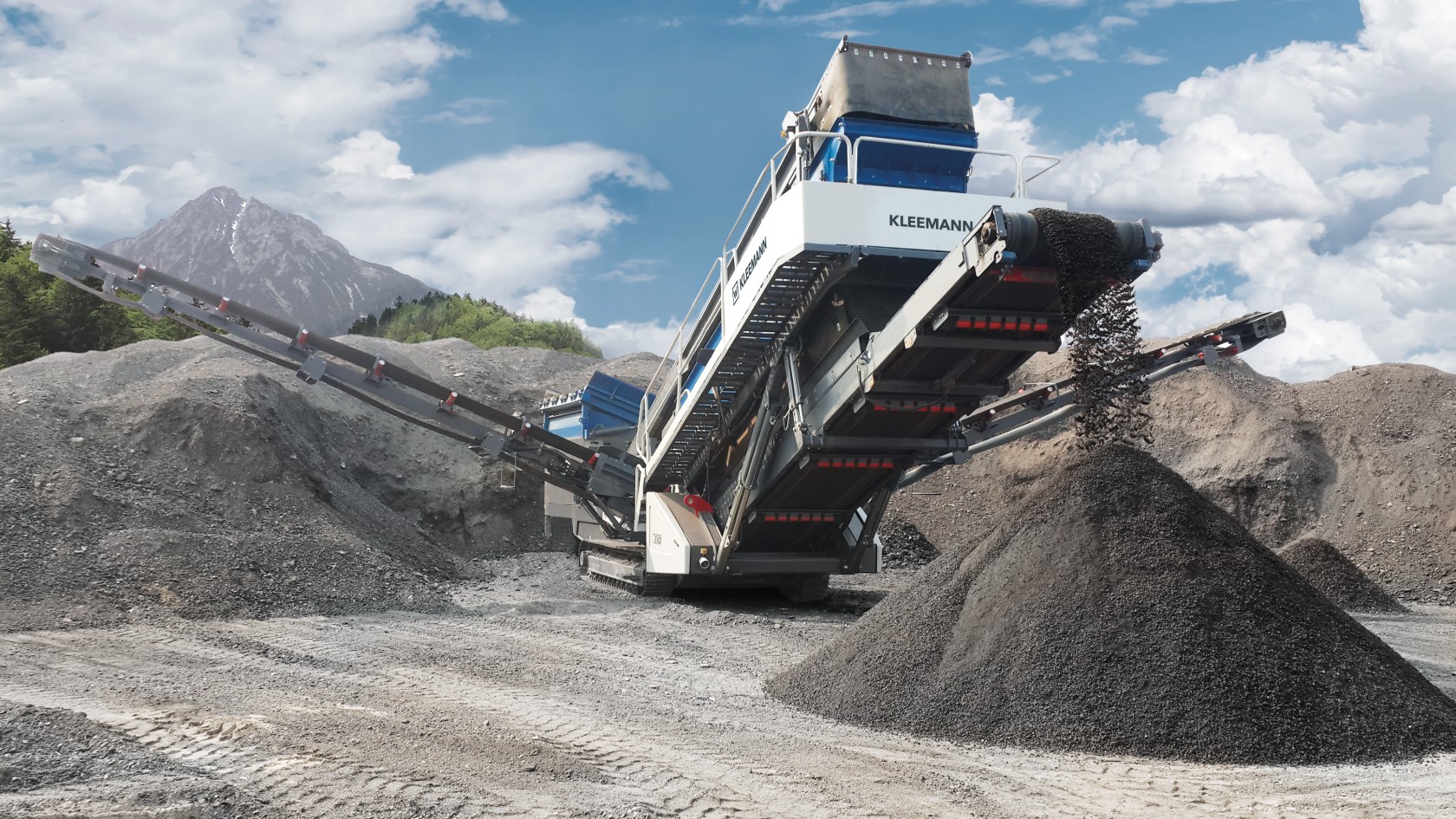

Optimal material preparation
When processing natural rock, larger rocks are broken up into defined grain sizes in a multi-stage crushing and screening process.
If the rock is processed in mobile plants, excavators transfer the blasted rock to crushers which are usually located directly alongside the quarry wall. The crushed stone is then either transferred directly to the next processing stage on conveyor belts or removed by trucks. Alternatively, the broken material can also be removed by heavy-duty trucks. Excavators or wheeled loaders load the rock onto trucks at the quarry wall for transport to the stationary processing plan
Crushing techniques distinguish between pressure crushing and impact crushing. Jaw crushers or cone crushers use the so-called pressure crushing technique where material is reduced in size mainly by high pressure between slow-moving wear parts. Impact crushers use the so-called impact crushing technique, in which the rock is accelerated by a massive fast-moving rotor and reduced in size by impacting against breaker walls. Jaw crushers are widely used for crushing medium-hard to hard rock, and are mostly used as primary crushers. Impact crushers work as both primary and secondary crushers for processing soft to medium-hard rock, producing larger quantities of fines. Cone crushers are used predominantly as secondary crushers for hard rock.
